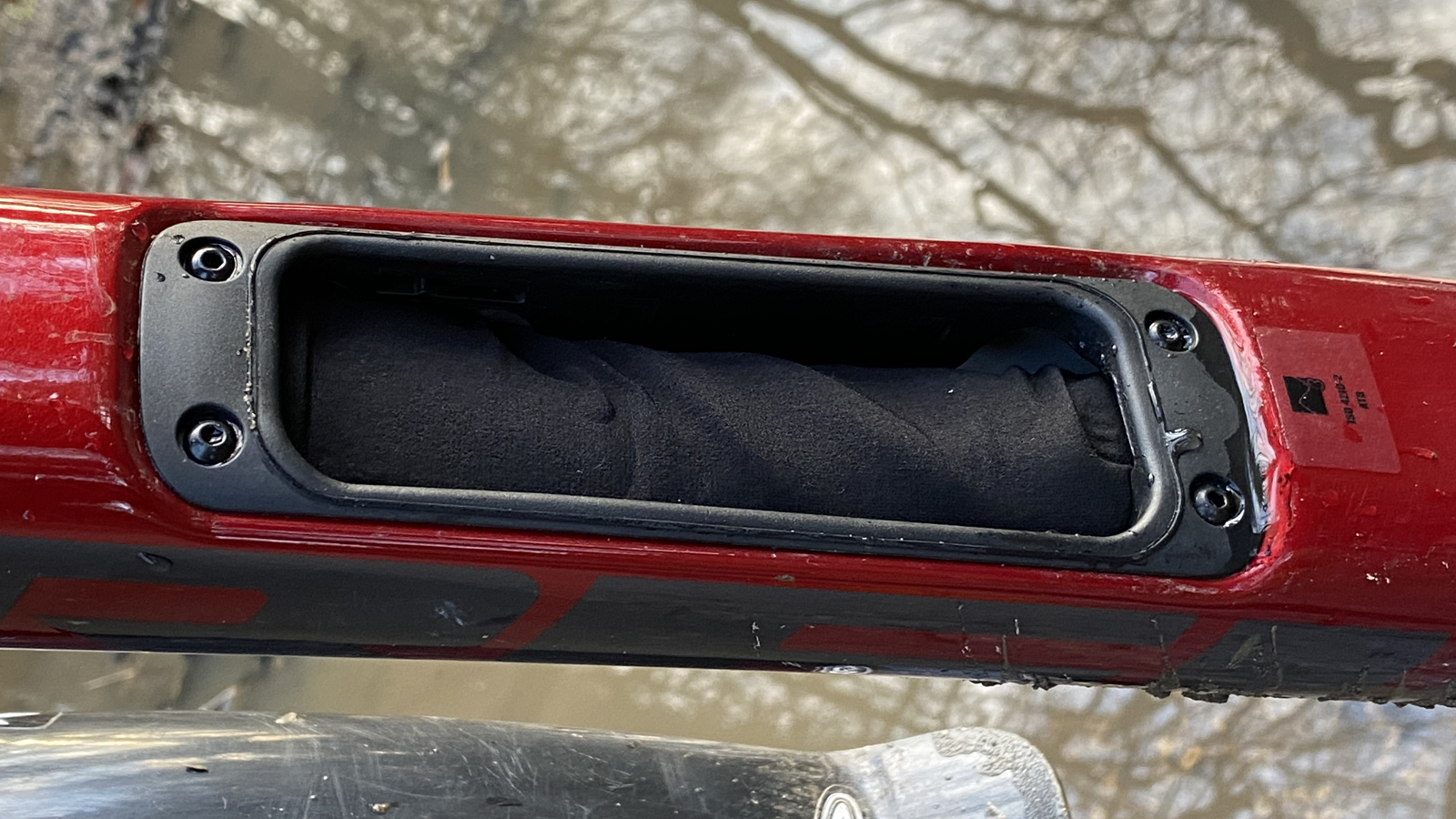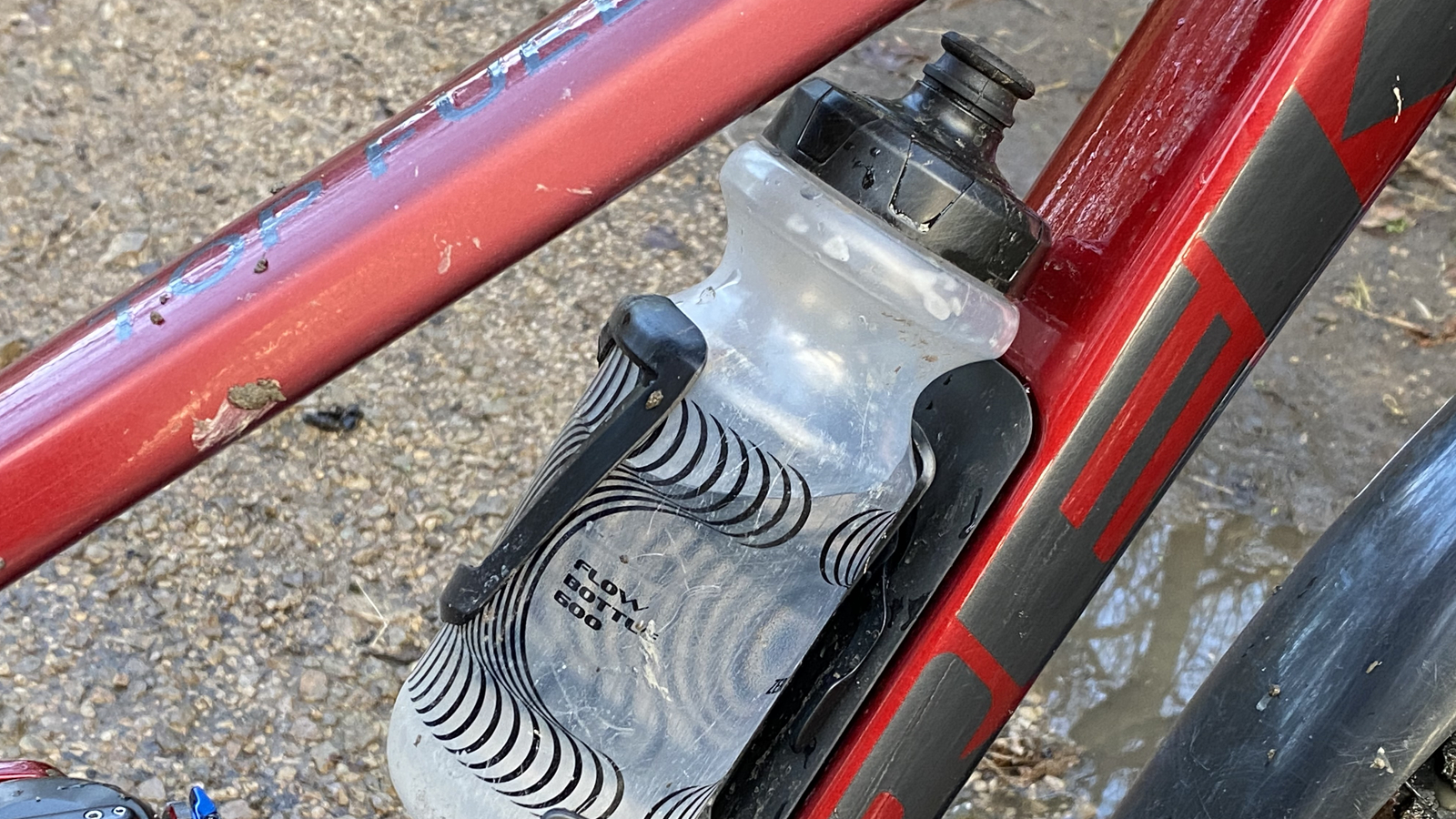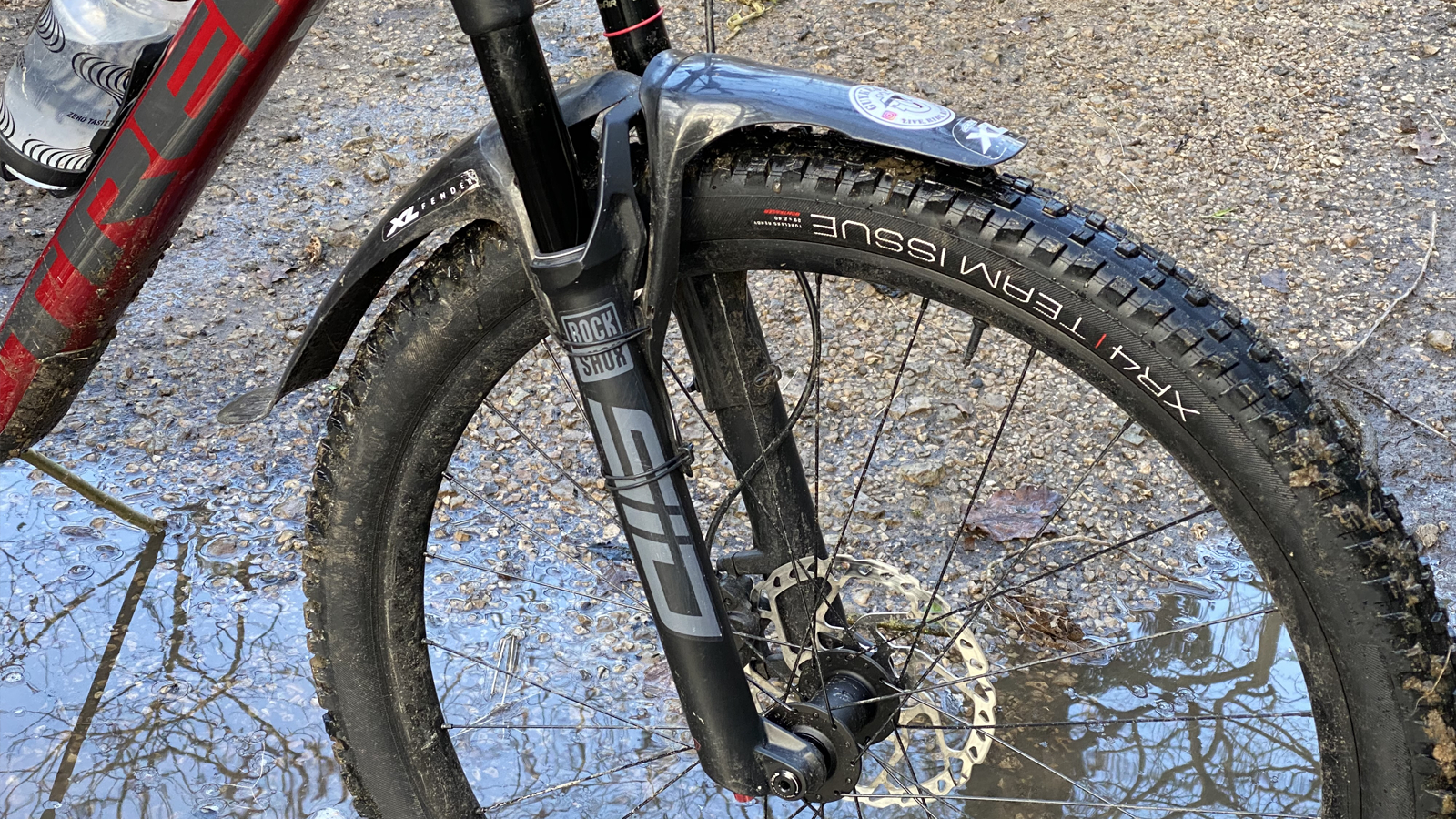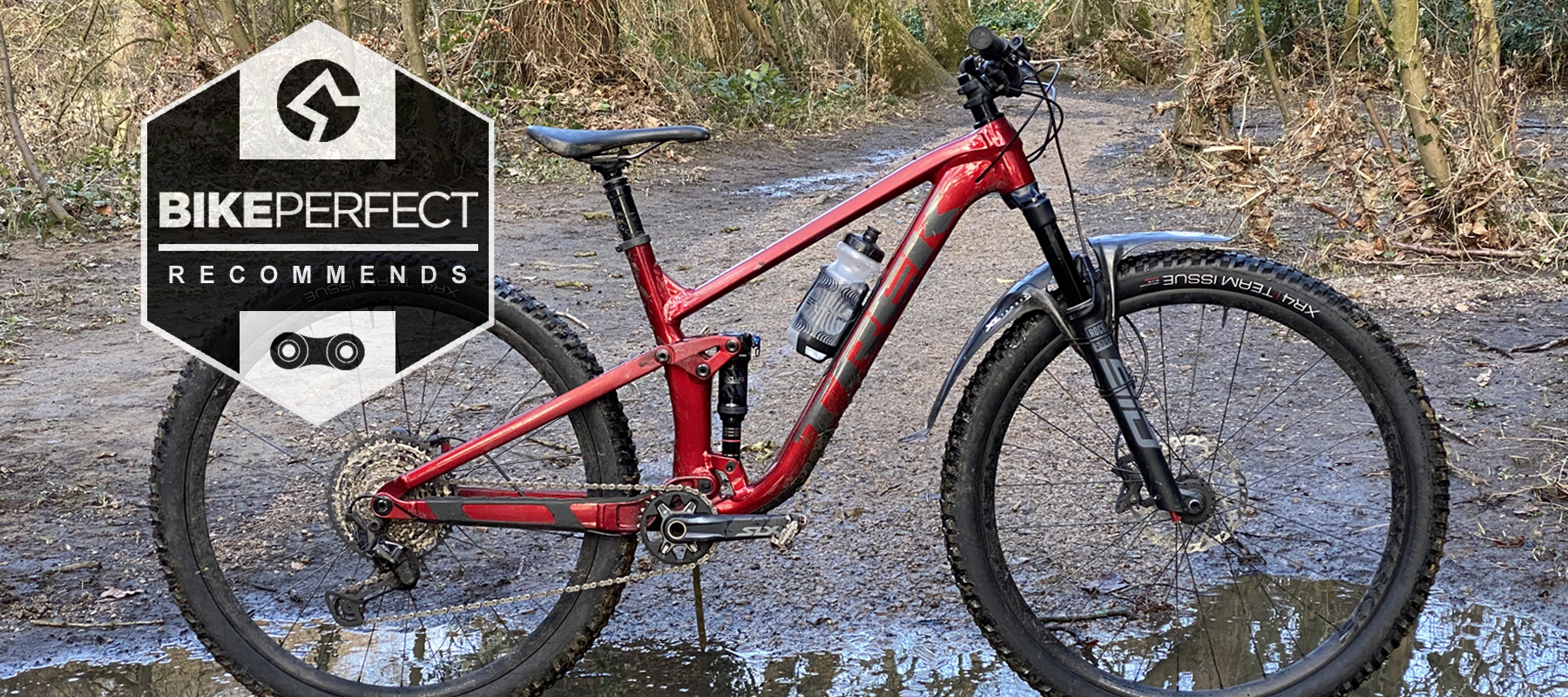Bike Perfect Verdict
Awesome suspension, agile swagger, grippy kit and practical frame updates build a brilliant rally bike, but high weight buries any XC aspirations
Pros
- +
Infectiously agile and playful vibe
- +
Superlative suspension feel
- +
Seriously tight tracking frame
- +
Trail tough kit
- +
Internal storage
Cons
- -
Too heavy for XC racing
- -
Simple fork damper
- -
Tight internal storage access
- -
Yawning gap between this and the Supercaliber
Why trust BikePerfect
Top Fuel used to be Trek’s out-and-out best full-suspension mountain bike for racing, but with the soft-tail Supercaliber under its sponsored riders now, the Top Fuel has developed a burly rather than race character.
The latest frame, suspension and spec changes to the 8 make the most of its short-travel agility and gripped tenacity to create a proper rally racer. Excess weight shows on climbs and acceleration though.
Design and geometry
The alloy Top Fuel frame not only has the same geometry, shock and suspension layout as its carbon counterpart but Trek’s engineers have also worked super-hard to give it the same extensive, updated feature lineup. That includes the lever-locked trapdoor into the down tube for internal storage, threaded bottom bracket shell with chain guide tabs. The Knock Block 2.0 inset now allows 72-degrees of steering lock (not 58-degrees as before) or you can fit a blank insert for full rotation if the bars aren’t slammed.
In fact, it’s one of those bikes where we continually found ourselves riding how we always want to ride, not how we actually ride. That inevitably builds into an addictive upward spiral of confidence and insolent speed that often ended with us snapping at the heels of more expensive longer travel bikes even on really rowdy trails. Picking a larger, longer frame will settle it even more at speed, but for flow trails, it was refreshing to really rip those big Bontrager side tire lugs round on a compact, close combat chassis. Just be careful you don’t get too carried away, as however good it feels, less travel inevitably means the tires are having to cope with more impact force and we soon put a couple of splits in the rear tire despite the ‘inner strength’ casing.




When that happens the narrow neck of the storage hatch can make getting your spare tube out awkward and the high cage position means you won’t get a large bottle in either. There’s space for a 2.5in tire in the rear swingarm which pivots co-axially around the rear axle according to Trek’s ‘Active Braking Pivot’ wisdom. While it limits choice, the switch to a 34.9mm seatpost size should mean stiffer, smoother dropper action, especially on larger frame sizes which get up to a 200mm shaft stock. The new trunnion style shock pivots more smoothly and is the right way up now compared to last year’s inverted shocks. That means the MinoLink geometry flip chip to change angles by 0.5-degrees is now at the base of the shock but it’s still easy to get too. Significantly all RockShox spec Trek bikes from the 8 upwards get the same ‘Ultimate RCT’ spec Deluxe rear shock.
The alloy frame is a kilo heavier (3.74kg vs 2.7kg) than the carbon option according to Trek’s weights. This saves you $1,400/£1,500 if you buy the frame separately, although it still retails for $2,319.99/£2,350. Those numbers prove it’s neither affordable or light for a bike that you’ll find listed in the XC section of Trek's website, not the trail pages. In fact, the 130mm Fuel EX Al frame is the same weight although that doesn't have internal storage.
A 66/66.4-degree head tube definitely suggests progressive riding rather than traditional podium hunting vibes too. The 465/469mm reach on our M/L size is more trad than rad though so riders after a stretch should make use of the short 450mm seat tube and opt for the L with a 480/484 reach. All bikes get the same 76/76.4-degree seat tube angle and 434/435mm chainstay length though so while having six (S-XXL) sizes is great, the balance is definitely centered around the M - M/L - L models.
Components and build
The Top Fuel 8 is the most expensive alloy bike, above the 7 at $3,529.99/£3,200 and the 5 at $2,629.99/£2,700 (we don’t know what 6 did to offend them but its missing from the line-up), but below the carbon-framed 9.7 at $4,229.99/£4,700.
The highlights of the package are the lightweight SID fork (albeit with the simplest Rush Damper) and Shimano XT rear mech and shifters. The Bontrager XR4 tires are some of our favorite welterweight all-rounders too. The SLX crank is a great piece with a 30T ring for easy climbing, but muscle Mary’s will find a 36T fits the frame too. You get a 150mm Trans-X dropper with a Bontrager Arvada saddle on top and 35mm diameter Bontrager Elite 45mm stem and 780mm wide bar.
Deore four-pot brakes just about do the job adequately via 180/160mm rotors but together with the wide rim tubeless Bontrager Line Comp 30 wheels they’re an obvious area where extra weight creeps in and adds up to nearly 14.5kg without pedals.

Performance
Add that weight to chunky treaded, relatively grippy tires and however Trek categorizes the Top Fuel, the 8 clearly isn’t the best choice for charging climbs and ripping round simple XC laps. Now we’ve got rid of the people who’ll likely love the 12.2kg Trek Supercaliber for the same money, we can start talking about what the Top Fuel does do really well – and that’s riding properly rowdy.
While bikes like the Evil Following, Santa Cruz Tallboy, and Norco Optic have already established that short-travel bikes can feel awesome, the Top Fuel definitely goes into the small travel, BIG capability hall of fame. Like most of its peers, it doesn’t squander initial shock movement and can feel slightly sharp in the car park unless you drop tire pressures low.
Once moving though it’s both amazingly fluid and connected over ruts and roots whether climbing janky tech or sucking onto stutter bump/root ripple turns or off-camber high lines. The wheel path and rear pivot position mean there’s minimal pull back through the pedals as it hoovers up chunder so you can stay on the gas without getting jacked or stalled out. While we’re always suspicious of acronyms and a 160mm rotor doesn’t generate much torque anyway, the braking performance of the ABP rear end is impressively grippy compared to the same hardware on other bikes.

The RCT damper also has plus and minus low-speed compression settings to fine-tune support sensitivity depending on personal/terrain preferences. Even in the plus setting the mid-stroke mobility does mean you’ll want to flick into the much firmer ‘pedal’ mode if you’re stood up slow cadence churning on a climb or don’t want distracting bounce on long smooth climbs. The SID fork gets a similar firming option via the fork top lever though we rarely touched it unless we were really hanging on a road climb.
While the superlative suspension performance is definitely the heart of the Top Fuel’s ‘have a go hero’ character, the rest of the bike definitely exploits it rather than squandering it. The alloy frame might be heavy but it’s seriously stout when it comes to squaring up to the trail when things get punchy.
While the simpler Rush damper starts to get seasick and inconsistent well before the back end, the 35mm stanchions do a great job of staying on track. Shorter travel means less dive too and together with well-balanced cockpit dimensions and steering angle gives a really predictable and tenacious target lock.
Despite the hefty weight and relatively slow rear hub engagement the fact you can keep the power down or brake really late meant the Top Fuel always felt hyped to be hitting trails and tweaking lines as fast as possible. The shorter M/L size made it a proper joyride on tighter, twistier trails but you can still drive it really hard, heels down, feet level through turns and it loves to pump downslopes.

Verdict
Trek’s Top Fuel 8 is a brilliant example of just how good short-travel suspension can feel, and less stroke always means a more responsive, visceral ride than a leggier bike. The geometry and proper trail tires really let you exploit the hooligan that’s hiding in the frame along with your pump, tool and spare tube too.
As much as we’ve loved ripping around the trails on it, there’s no doubt it’s heavier and harder to accelerate/elevate than we’d like for its supposed XC/downcountry range placement though. If you’re about the overall vibe, not outright velocity, that doesn’t matter though.
Test conditions
- Temperature: -2 to 8 degrees
- Surface: Mixed blue-black trail center, moorland tracks, off-piste wooded tech and DH
Tech Specs: Trek Top Fuel 8
- Price: $3,829.99 / £3,850
- Model: Trek Top Fuel 8
- Discipline: XC/downcountry/trail
- Head angle: 66/66.4-degrees
- Frame material: Alpha Platinum Aluminium
- Size: M/L
- Weight: 14.46kg
- Wheel size: 29 x 2.4in
- Suspension: RockShox SID 120mm travel, 44mm offset/RockShox Deluxe Ultimate RCT 120mm travel
- Drivetrain: Shimano XT M8100 mech and shifter. Shimano SLX M7100, 10-51 cassette, chain
- Cranks: Shimano XT 30T chainset
- Brakes: Shimano Deore M6000 brakes with 180/160mm rotors
- Cockpit: Bontrager Line 780mm bar and 45mm stem
- Wheelset: Bontrager Line Comp 30 wheels
- Tires: Bontrager XR4 Team Issue 29 x 2.4in tires
- Seatpost: TranzX 150mm dropper post
- Saddle: Bontrager Arvada, steel rail saddle

Guy Kesteven has been working on Bike Perfect since its launch in 2019. He started writing and testing for bike mags in 1996. Since then he’s written several million words about several thousand test bikes and a ridiculous amount of riding gear. He’s also penned a handful of bike-related books and he reviews MTBs over on YouTube.
Current rides: Cervelo ZFS-5, Specialized Chisel, custom Nicolai enduro tandem, Landescape/Swallow custom gravel tandem
Height: 180cm
Weight: 69kg

